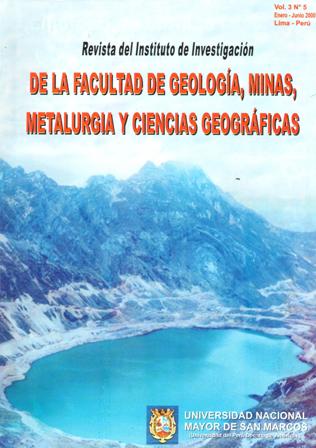Cómo mejorar la extracción de oro en lixiviación en montón
DOI:
https://doi.org/10.15381/iigeo.v3i5.3058Palabras clave:
Hidrometalurgia, aglomeración de minerales, recuperacion de metales preciososResumen
En algunos casos es fácil extraer el oro presente en un mineral, por métodos convencionales de cianuración en montón, sin embargo en otros, los resultados son muy pobres y puede tener su origen en intercrecimientos mineralógicos en tamaños atómicos o sub-atómicos, presencia de elementos cianicidas y contenidos de materiales finos; nuestra investigación está orientada a encontrar alternativas de metales preciosos, causando severas pérdidas de oro en los relaves. el trabajo consiste en demostrar en qué circunstancias se debe aglomerar el mineral para solucionar el problema de solución cuando un mineral aurífero presenta interesante contenido de materiales finos y arcillosos porque al humedecerse forman masas compactas y no permite que el cianuro usado como solvente, llegue a tener contacto con los percolaciones pobres de soluciones lixiviantes, característica de un buen aglomerante, máquinas usadas para aglomerar minerales, determinar el aglomerante más apropiado económica y técnicamente, los diferentes efectos que se obtienen cuando se estudian variables tales como: consumo de reactivos, % de humedad, tiempo de curado, adicion de cianuro en la etapa de aglomeración etc. El costo por aglomerar fluctúa alrededor del 10% del costo total de operación que se compensa ampliamente al incrementar la recuperacion de metales preciosos.
Descargas
Publicado
Número
Sección
Licencia
Derechos de autor 2000 Angel Azañero Ortiz, Pablo Nuñez Jara, Victor Vega Guillén, Manuel Caballero Ríos, José Vidarte Merizalde

Esta obra está bajo una licencia internacional Creative Commons Atribución-NoComercial-CompartirIgual 4.0.
LOS AUTORES RETIENEN SUS DERECHOS:
a. Los autores retienen sus derechos de marca y patente, y tambien sobre cualquier proceso o procedimiento descrito en el artículo.
b. Los autores retienen el derecho de compartir, copiar, distribuir, ejecutar y comunicar públicamente el articulo publicado en la Rev. Inst. investig. Fac. minas metal cienc. geogr. (por ejemplo, colocarlo en un repositorio institucional o publicarlo en un libro), con un reconocimiento de su publicación inicial en la Rev. Inst. investig. Fac. minas metal cienc. geogr.
c. Los autores retienen el derecho a hacer una posterior publicación de su trabajo, de utilizar el artículo o cualquier parte de aquel (por ejemplo: una compilación de sus trabajos, notas para conferencias, tesis, o para un libro), siempre que indiquen la fuente de publicación (autores del trabajo, revista, volumen, numero y fecha).






